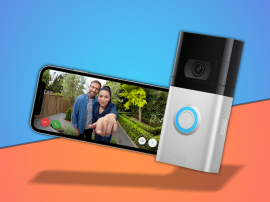Samsung Galaxy Z Fold 5: know when to fold ’em
Design upgrades and slick software for fifth-gen foldable

Stuff Verdict
Minor improvements make all the difference; from software to camera quality, the Galaxy Z Fold 5 is as good as foldable phones get. Just expect to pay dearly to get one in your pocket.
Pros
- Outstanding build quality and stylish looks – with no gap
- Top-tier performance and consistently good battery life
- Made for multitasking
Cons
- Camera quality behind the best traditional flagship phones
- Pedestrian charging speeds
Introduction
Samsung’s Galaxy Z Fold range has been the undisputed champ of book-style foldable phones for four generations, but the past twelve months has seen the folding upcoming phone competition really ramp up. Huawei and Honor have been making a splash in China; Google has gotten in on the action; OnePlus has schooled almost everyone on the software side. The Galaxy Z Fold 5 is out to prove the firm that kickstarted the trend still does it best.
Standout upgrades include a streamlined design that banishes the gap for good, a custom-tuned CPU that majors in multitasking, and big brightness boost for the inner display. Add in the latest version of Samsung’s OneUI software and it promises to be a portable powerhouse.
At $1799/£1749 SIM-free though, the Z Fold 5 is mighty pricey. It’s on par with the Google Pixel Fold, and will set you back a fair bit more than any traditional, non-folding flagship. That suddenly makes things a lot more palatable. Is this foldable phone enough of an upgrade to maintain Samsung’s lead?
Review originally published 29 August 2023
How we test smartphones
Every phone reviewed on Stuff is used as our main device throughout the testing process. We use industry standard benchmarks and tests, as well as our own years of experience, to judge general performance, battery life, display, sound and camera image quality. Manufacturers have no visibility on reviews before they appear online, and we never accept payment to feature products. This handset was supplied by Vodafone UK on a two-week loan.
Find out more about how we test and rate products.
Design & build: goodbye gap
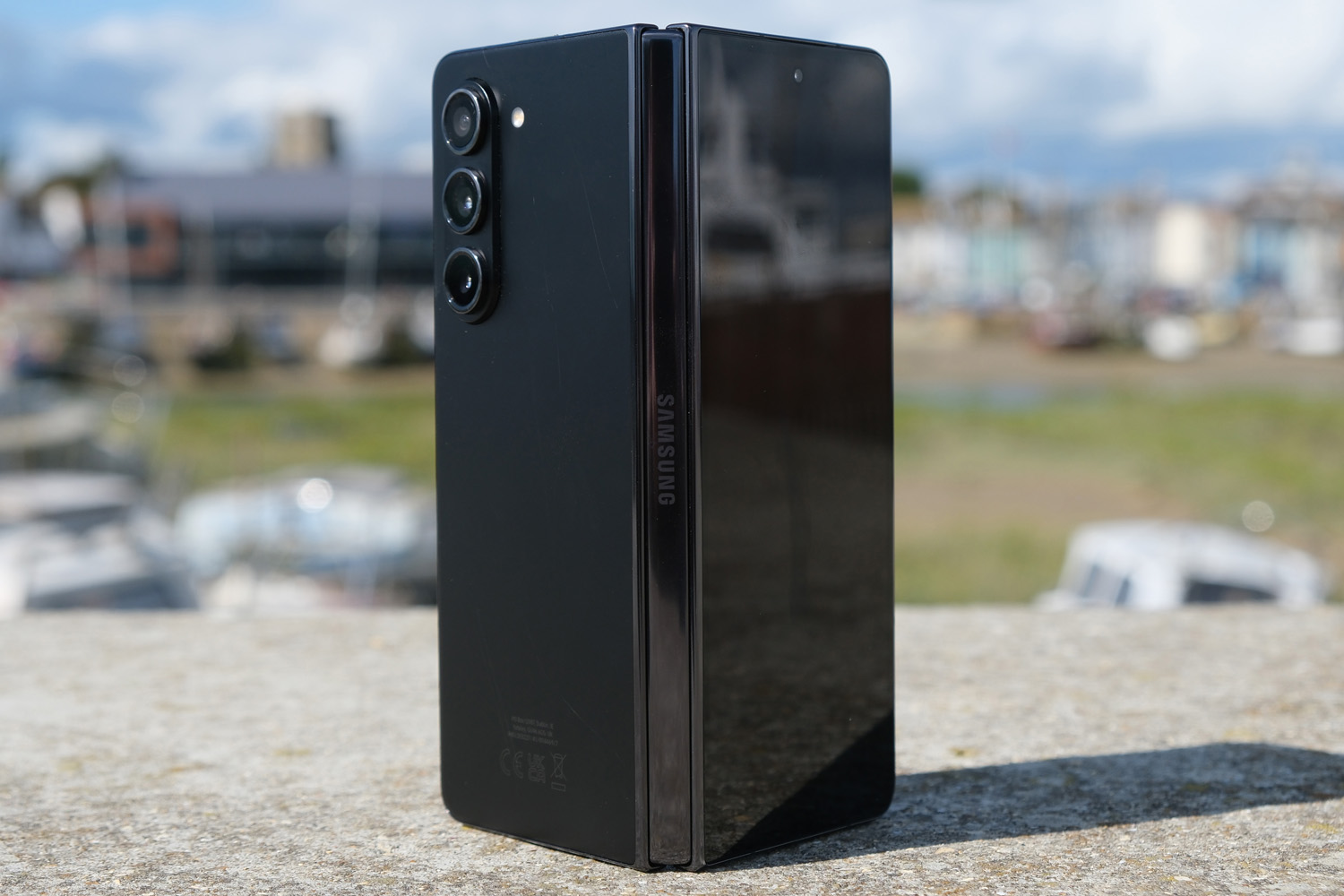
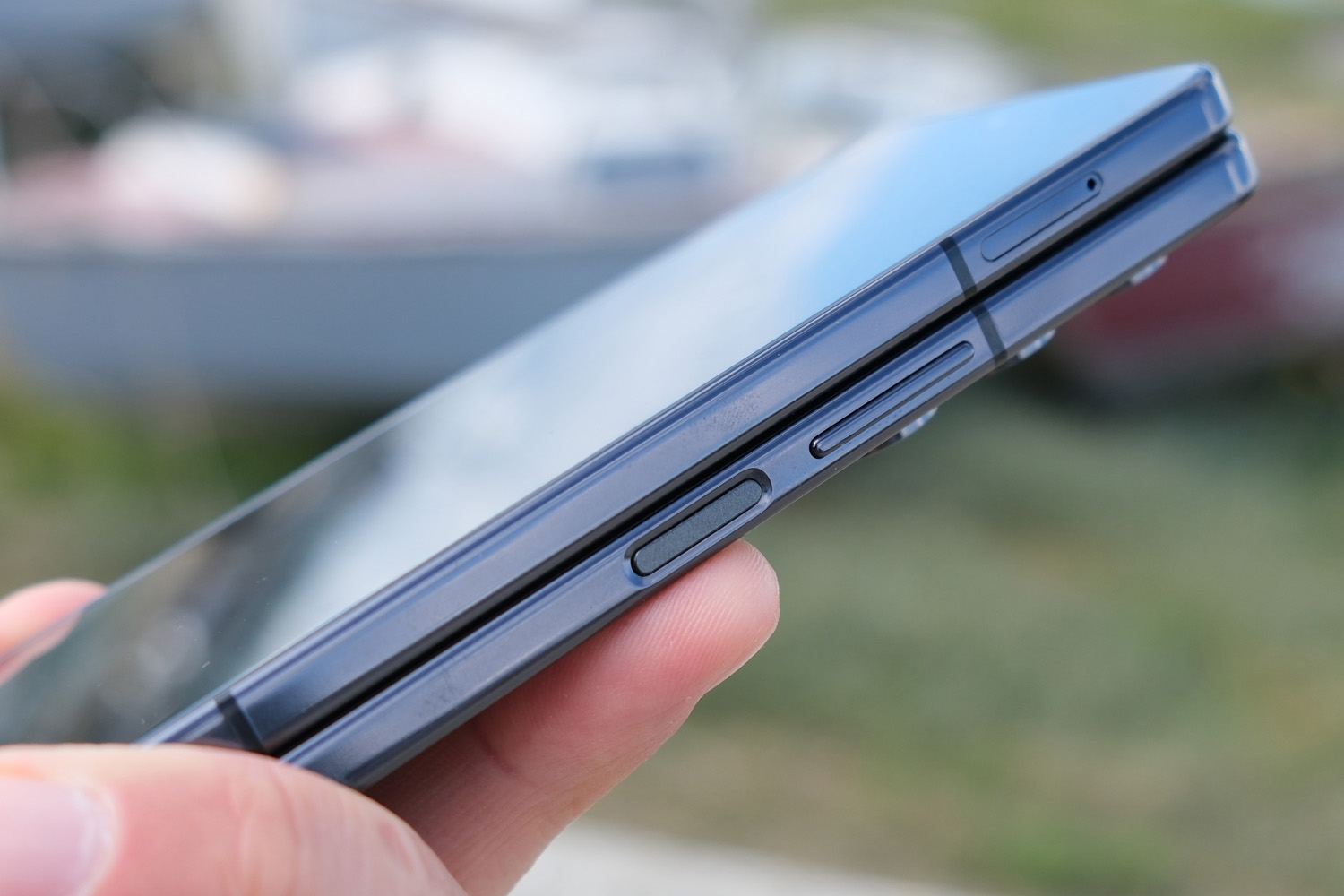
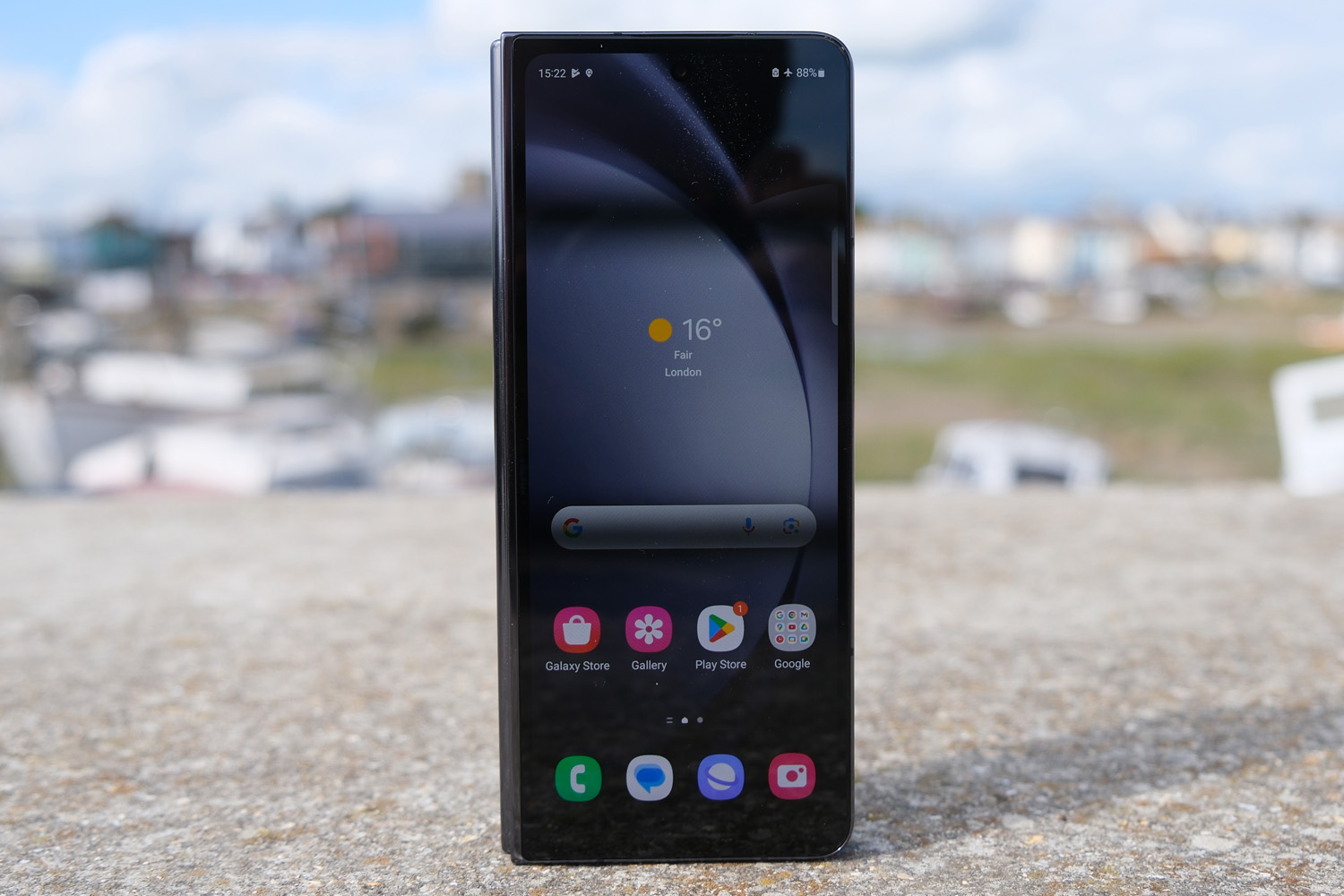
Held face-on and folded shut, it’s tough to tell whether you’re looking at the Z Fold 5 or its predecessor. Turn it over and the only hint is a relocated camera flash – and the new Icy Blue colour scheme. The family resemblance to Samsung’s other flagship phones remains strong, with a polished metal frame, smoothly rounded corners and matte glass which held up very well to fingerprint muck.
Check out the top or bottom, though, and it’s immediately obvious the Z Fold 5 is a generational upgrade. The gap is gone, courtesy of a waterdrop-style hinge that’s as still as sturdy and willing to hold steady at wide angles as the last-gen phone. It disguises the inner screen’s crease a little better too, although not to the extent of certain rivals.
It has shed 10g compared to the old phone, and is 2.4mm thinner when folded now. That made a minor difference in my pocket, but a bigger one in my hand; at 253g it’s only a little heftier than an iPhone 14 Pro Max, and feels closer to a traditional phone when folded shut. The Honor Magic V2 is slimmer still, though, and the current benchmark for skinny foldables.
Samsung has switched to Corning Gorilla Glass Victus 2 for the outer display, so it should be more damage-resistant than that outgoing model. What hasn’t changed is the IPX8 rating, which is still as good as foldable phones get on water resistance; the Motorola Razr 40 Ultra manages better dust resistance, but isn’t able to withstand as much of the wet stuff.
With no room to stash one inside the phone, the Galaxy Z Fold-specific S Pen digital stylus remains an optional upgrade. Samsung has slimmed down its official S Pen Fold Edition case fair whack, though. I like the contrasting colours, which are a lot more impactful than the phone’s subtle hues.
Screens: brilliantly bright
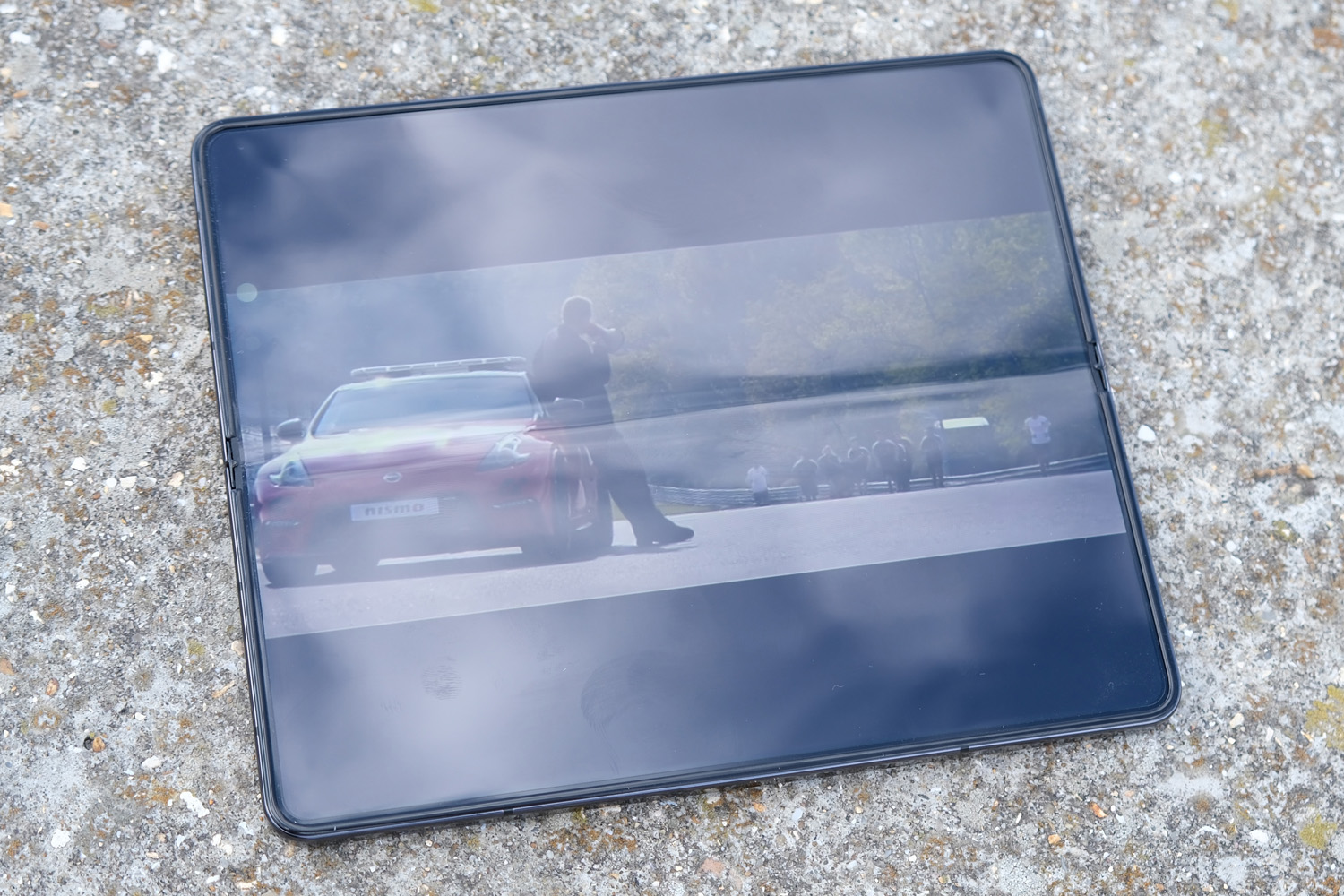
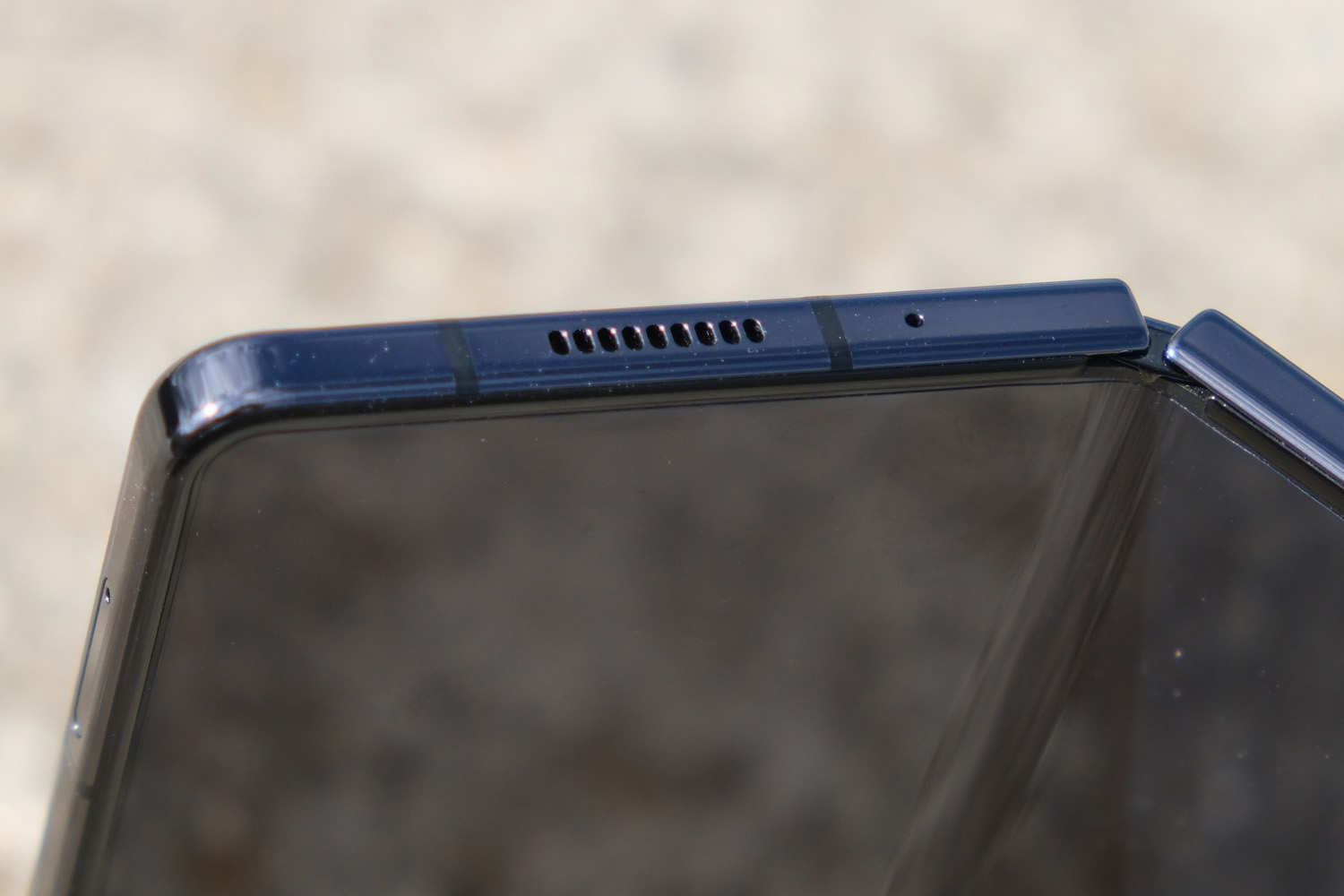
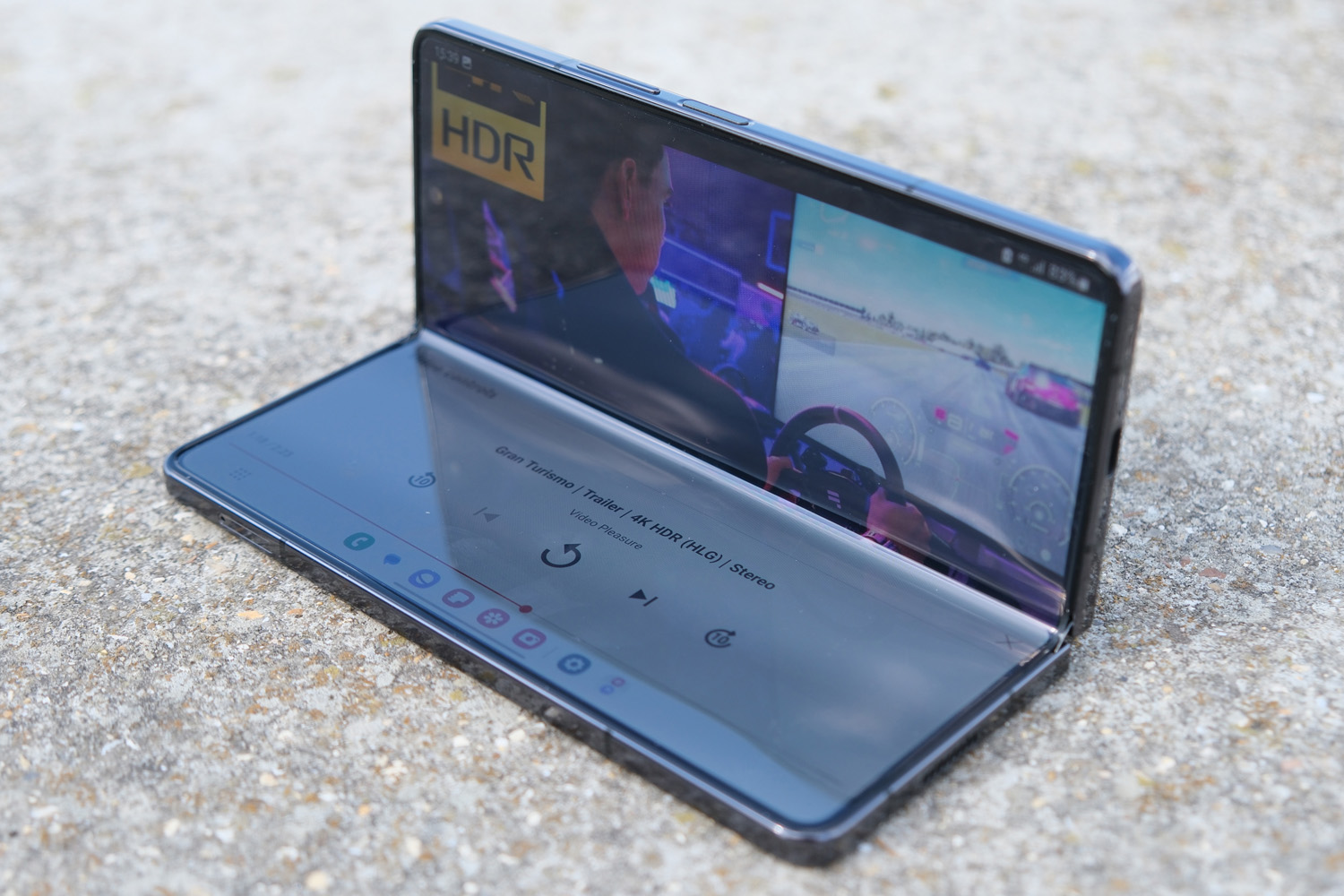
Having used the Google Pixel Fold and its short yet wide outer display for a while now, I’m no longer convinced tall and narrow is the way forward for book-style foldables. Samsung feels otherwise, so has stuck with the familiar 6.2in screen last used in the Z Fold 4. Its slender 23.1:9 aspect ratio still make certain apps and web pages felt a little cramped at first, but I did get used to it after a few weeks with the phone.
The panel is still top-tier, with a sharp 2316×904 resolution, 120Hz refresh rate and wonderfully vibrant AMOLED colours. It copes brilliantly outdoors in direct sunlight, boosting north of 1100 nits with High Brightness Mode (HBM) enabled. That’s up there with the very best foldables, and not far off the top mainstream flagships.
Bigger gains have been made on the inner panel, which has slightly skinnier bezels this time around. It’s still a 7.6in AMOLED panel, with a 2176×1812 resolution and 120Hz refresh rate, but a brightness booster puts it on par with Samsung’s Galaxy S23 line-up of traditional flagships. While the Z Fold 4 managed 1000 nits in HBM and 1300 nits peak, the Z Fold 5 hits a claimed 1200 nits and 1750 nits respectively. Fully cranked it gives plenty of punch to HDR film trailers, with dramatic highlights alongside deep shadows.
The built-in speakers supply equally engaging audio, getting impressively loud and keeping a great frequency balance even when pushed to maximum levels.
Cameras: familiar trio
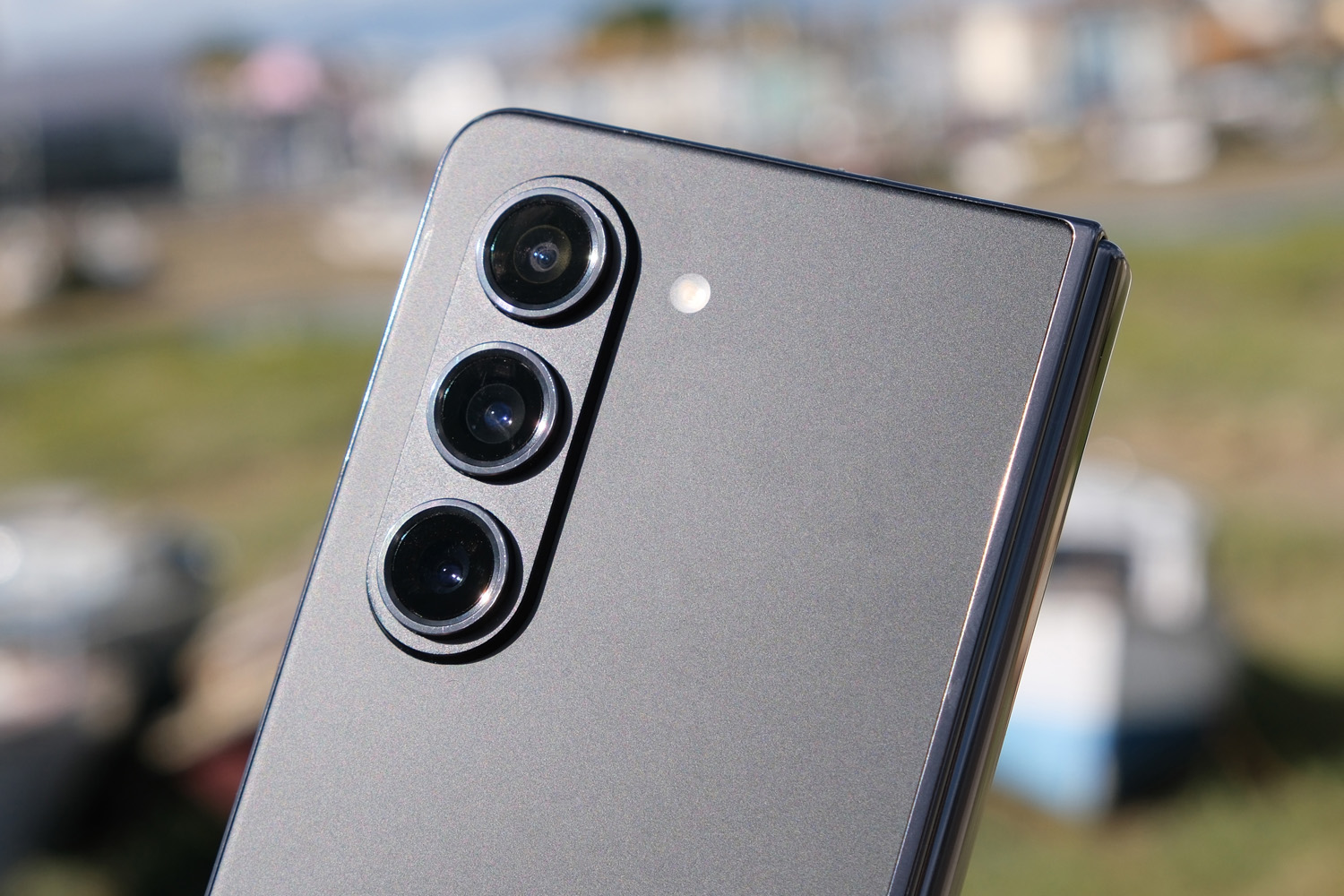
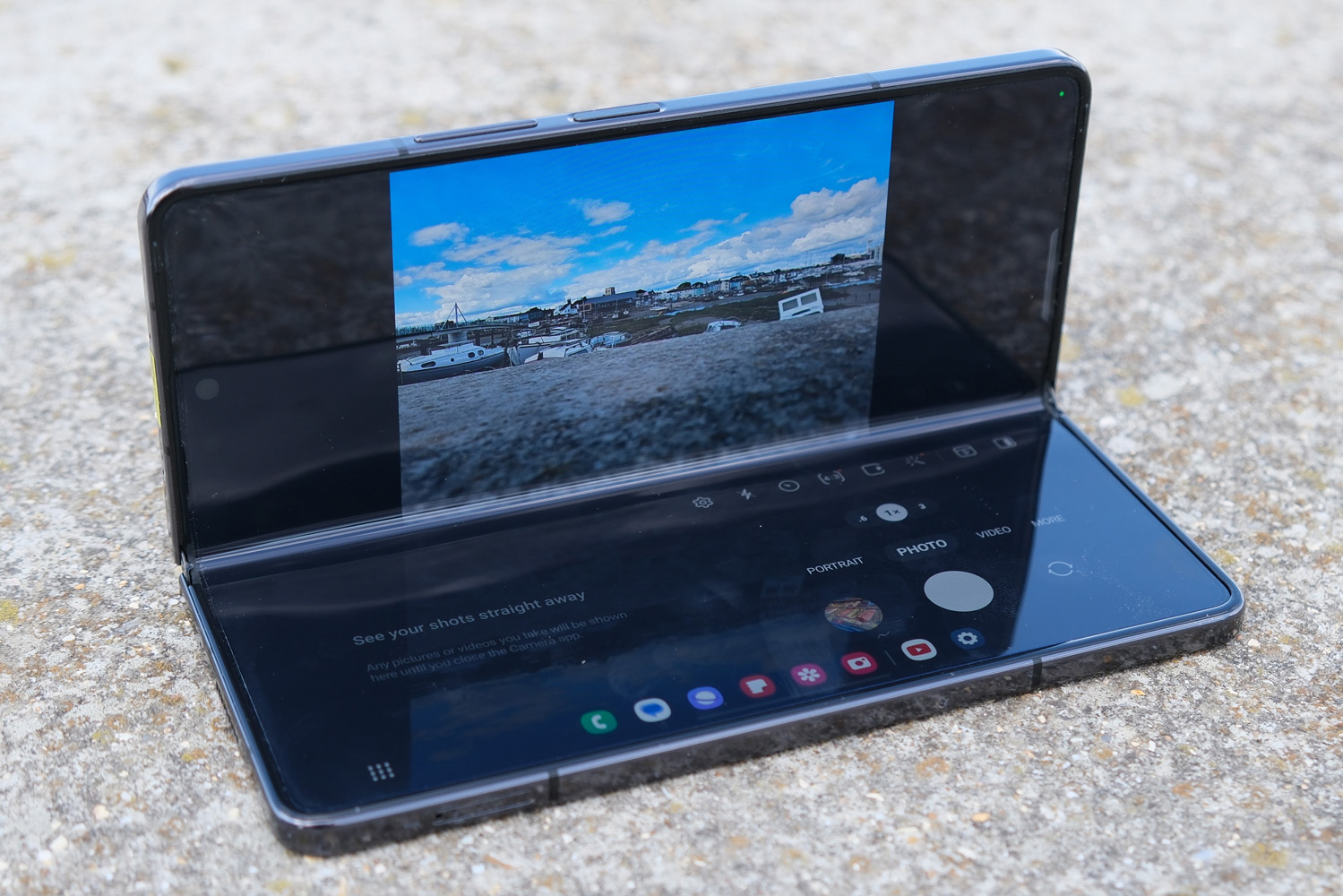
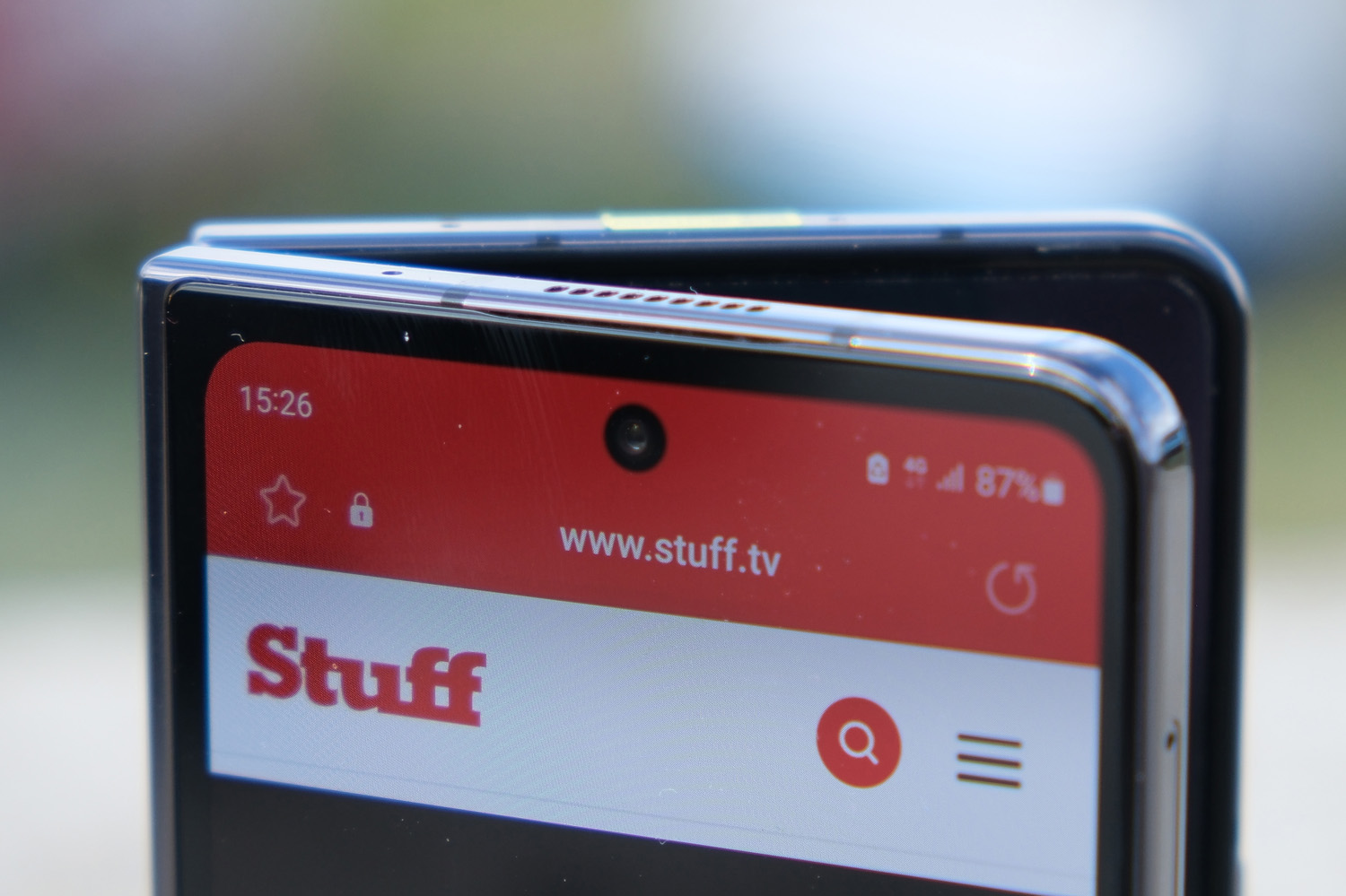
With Google having only recently brought its algorithmic camera cleverness to the folding phone scene, it’s a little disappointing not to see Samsung bringing any significant upgrades of its own this generation. The Z Fold 5 has the same trio of rear sensors, same punch-hole front selfie shooter and same under-display inner webcam as last year, albeit with a year’s worth of image processing improvements to fall back on.
That’s still some capable hardware, though. The 50MP main snapper has a wide f/1.8 aperture dual pixel autofocus and optical image stabilisation, which means it’s fast-firing and quick to lock on to subjects, even in low light. The 10MP telephoto also has OIS, which helps with steady shots at 3x optical zoom, and the 12MP ultrawide has a 123-degree field of view to really squeeze more of each scene into every snap.
Samsung’s usual colour and detail processing is still in full effect, with dramatic, vibrant snaps that are packed with wide dynamic range and overly-saturated hues. They’re not always true to life, but very pleasing to look at. Expect plenty of fine detail, a near total lack of noise, and super-contrasty results. It sits a tier below the very best camera phones, including Samsung’s own Galaxy S24 Ultra, but is on par with the best foldables – just with Samsung’s spin on image processing, which is bit more in-yer-face than Google’s.

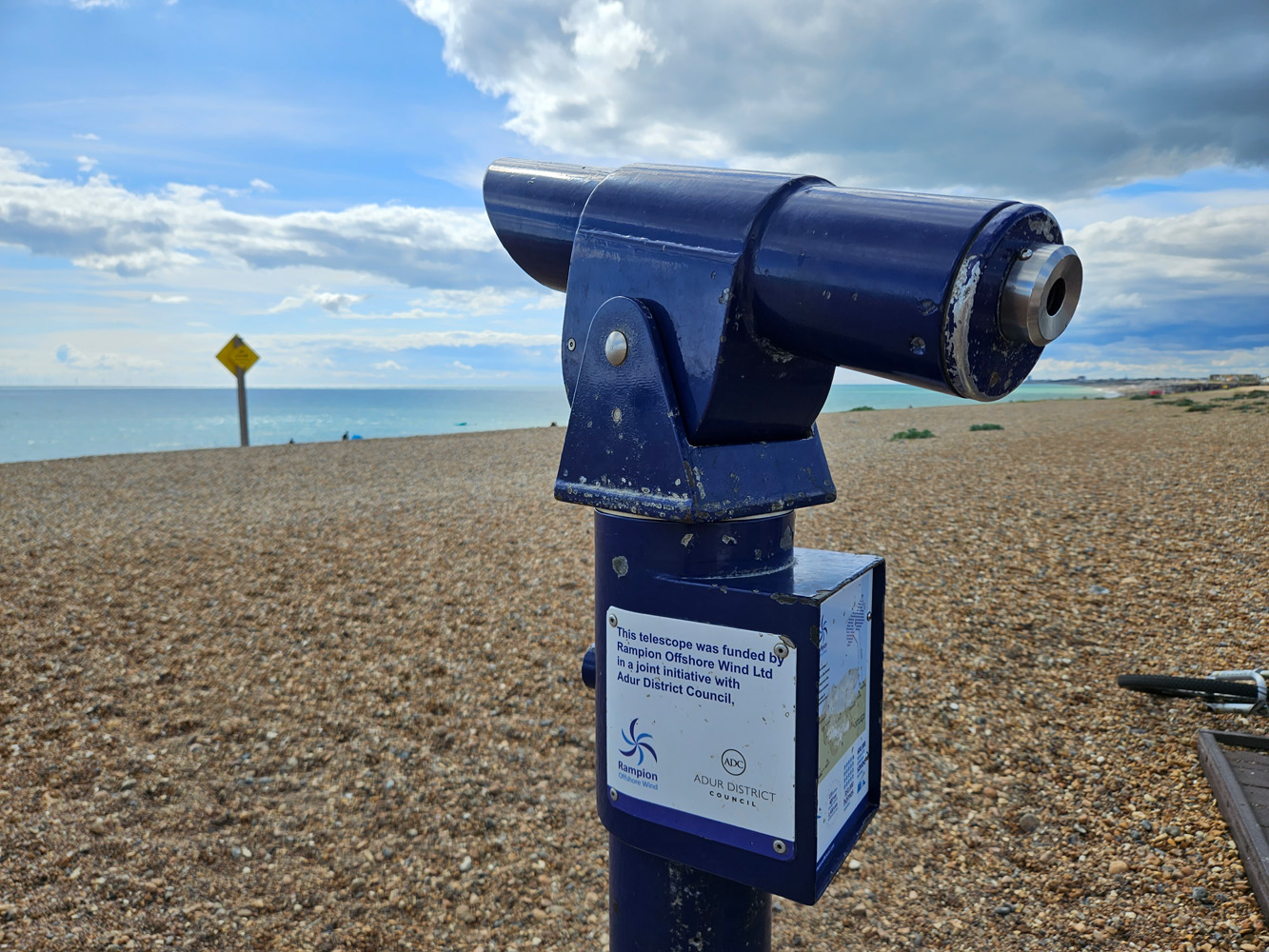







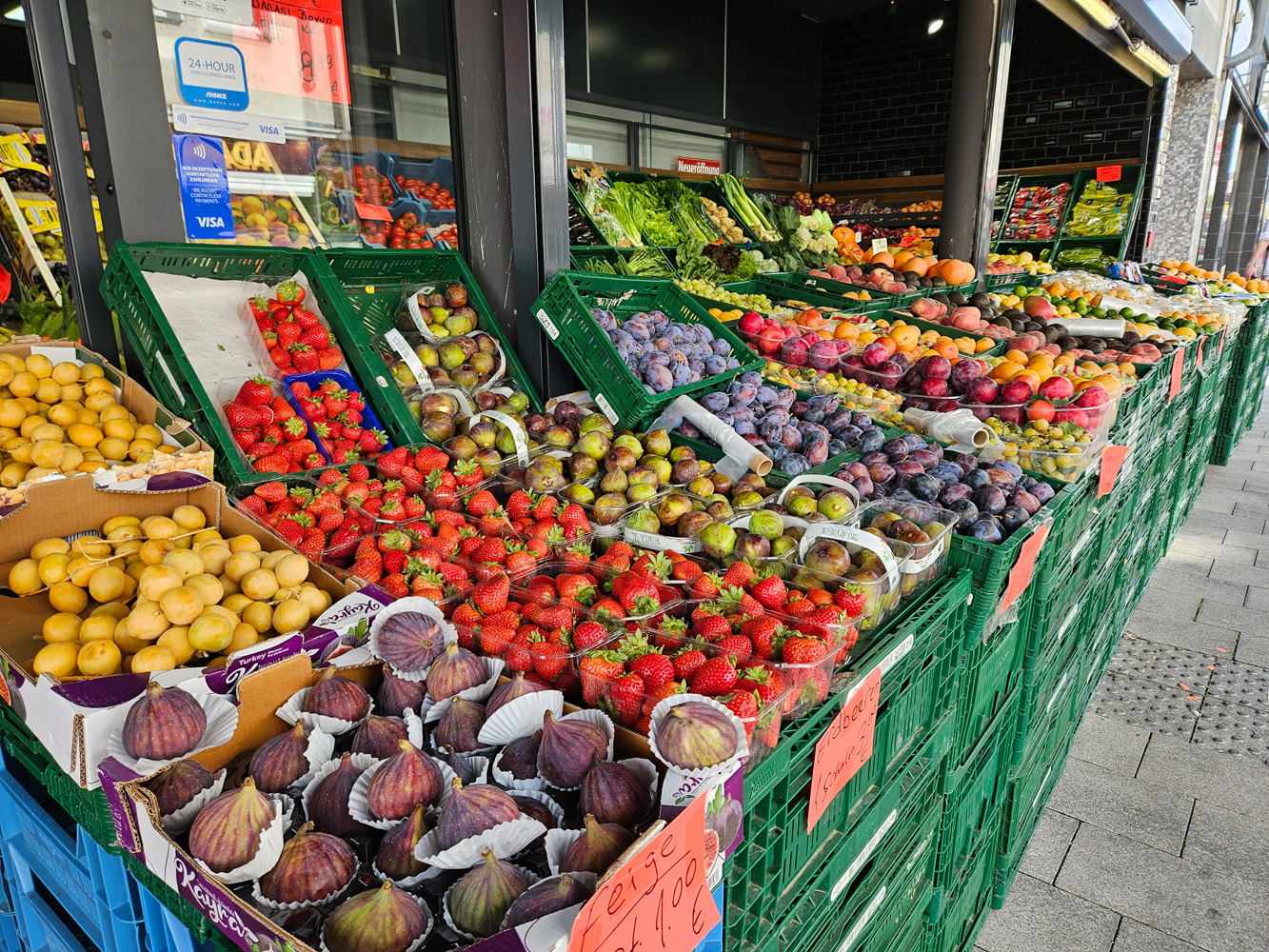



The ultrawide lens does a great job delivering colours, contrast and exposure on par with the main sensor in good conditions. Resolved detail takes a bit of a hit, and more-so at night, where noise reduction strips back a fair bit of clarity when you start zooming into each shot. Well-judged dynamic range means it can still take a satisfying snap, though.


The zoom lens takes colour-accurate, well-exposed shots that go a little overboard on dynamic range at times, so can look a little flatter than pics taken with the main camera. There’s no shortage of detail, though, and there’s no hint the 12MP snaps have been upscaled slightly from the sensor’s 10MP resolution. At night, you’ll definitely want to use Night mode: without it, shots are noisy and underexposed. Flick it on, though, and you get bright, contrast-heavy snaps with decent amounts of detail and a satisfying lack of noise.
3X zoom won’t get you as close to the action as the 5x lens on a Google Pixel Fold, but Samsung’s digital algorithms do a decent enough job if you pinch past its optical limitations.


You don’t need an especially steady hand to get clean low-light shots from the main sensor, with OIS and image-stacking doing a great job together. Noise is kept to a minimum, without stripping fine detail out of a scene, and colours stay natural. It can take a second or two for Night Mode to take each shot, and results are usually more vivid than real life, but are always pleasing on the eye. It’s up there with the best folding phones once the sun sets.
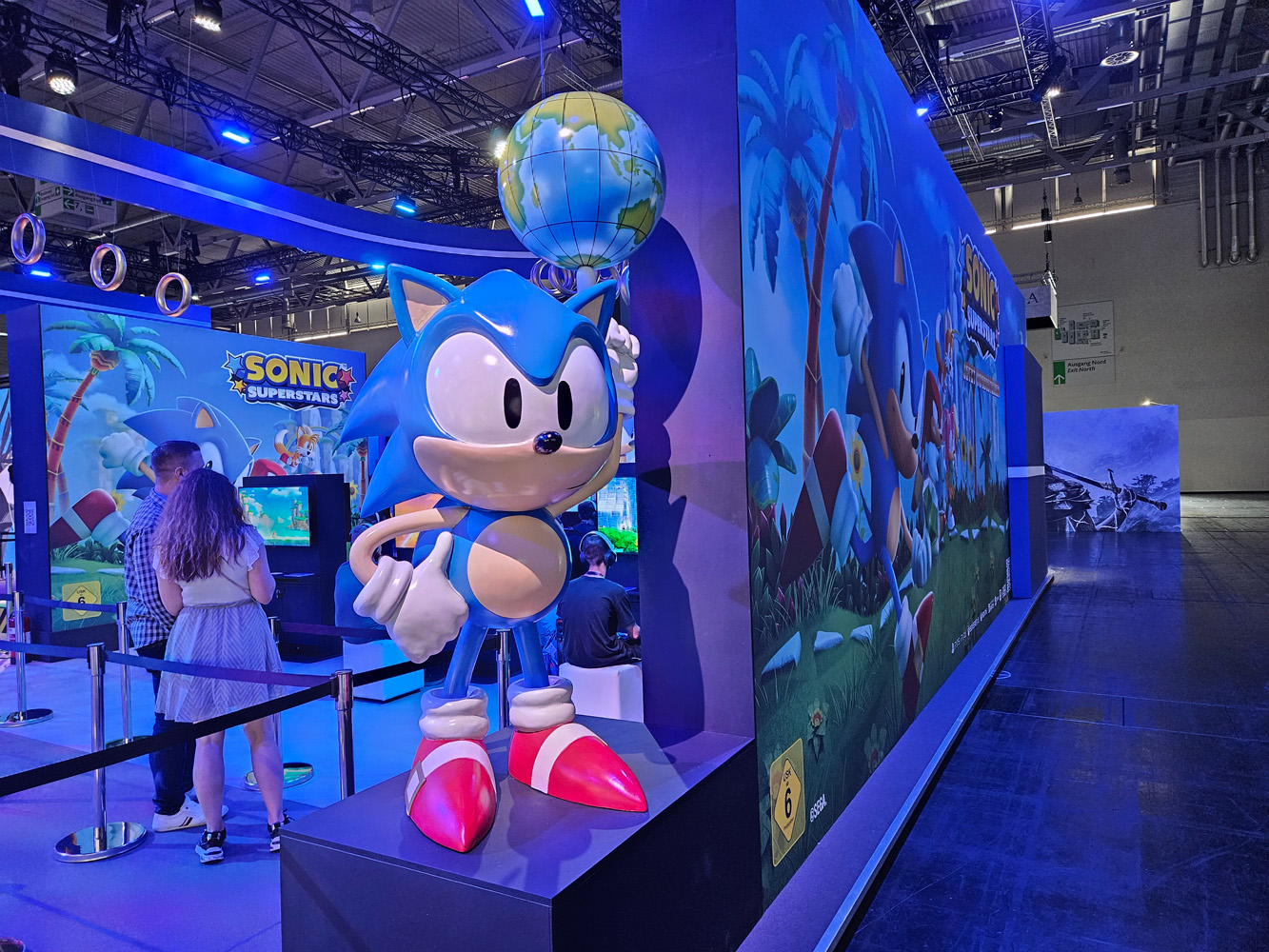




There’s been no major quality boost from the 4MP under-display webcam, which was useful for video calls on the outgoing Z Fold 4 but rather hazy for stills. That’s largely true here as well. The 10MP, f/2.2 front-facing camera fares better, but if you’re set on social sharing it makes more sense to unfold the phone use the rear cameras for selfies.
The camera app has all the usual modes and features, including a Dual Preview to help your subjects see in the outer screen how you’re framing them using the inner one.
Software experience: keeping productive
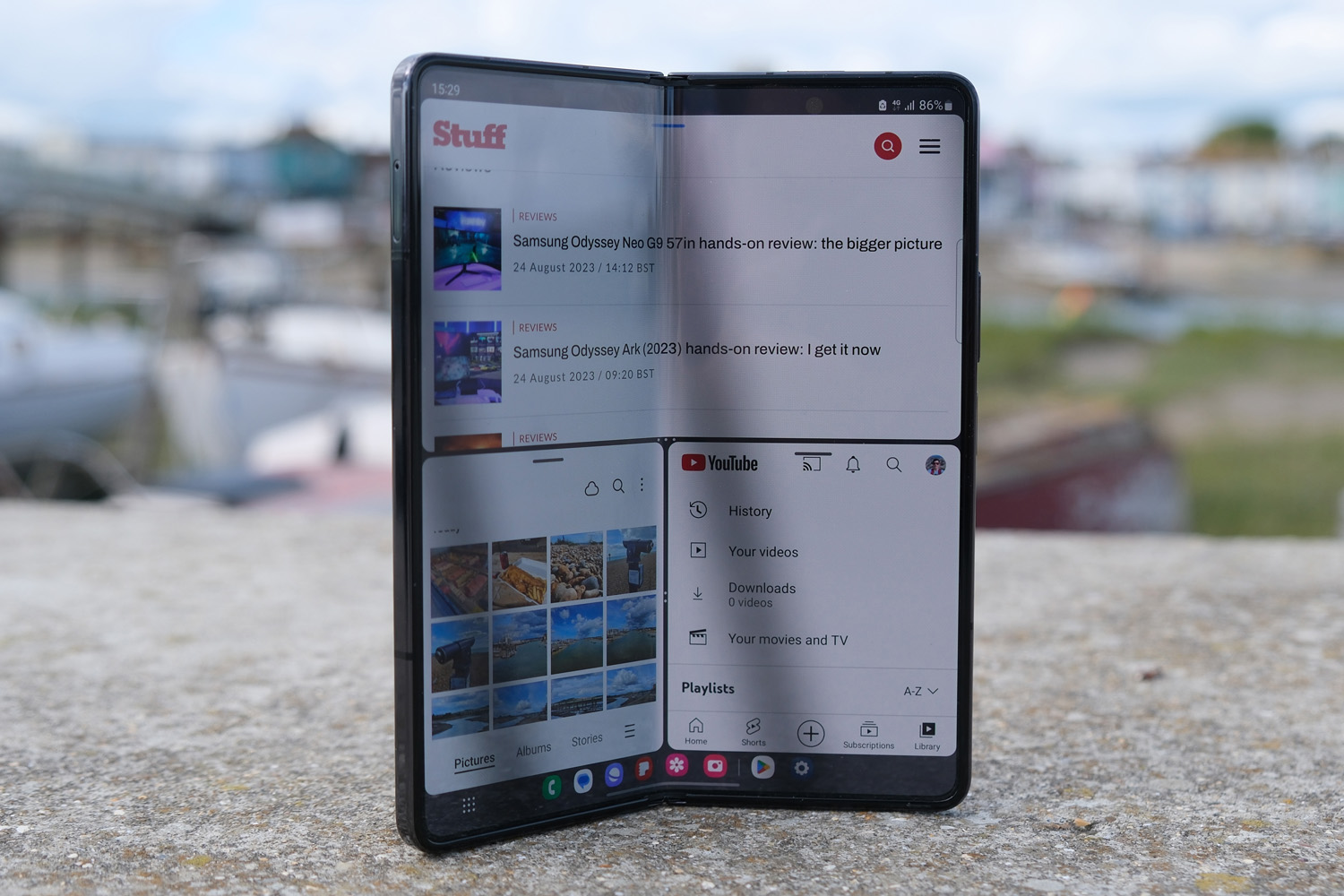
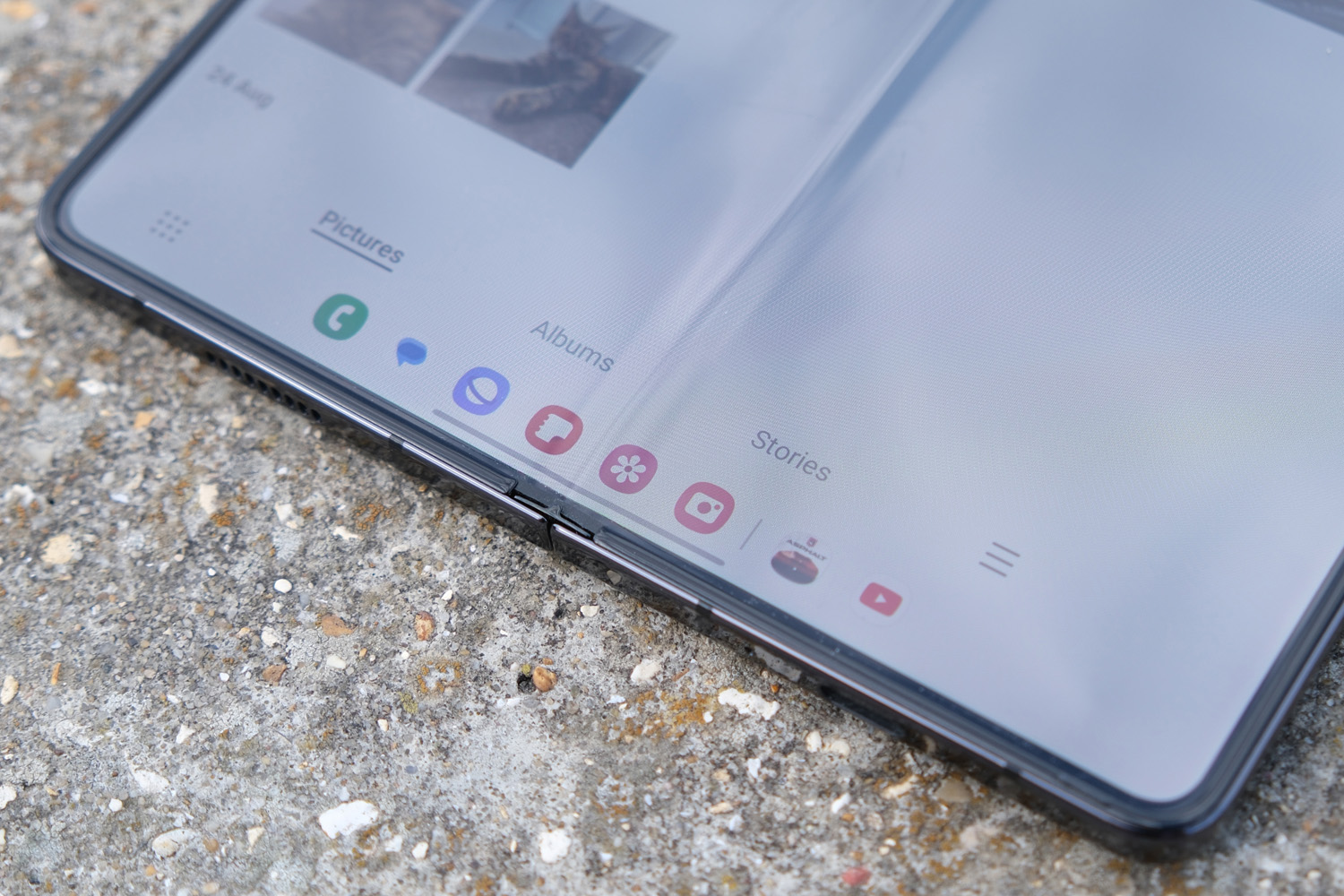
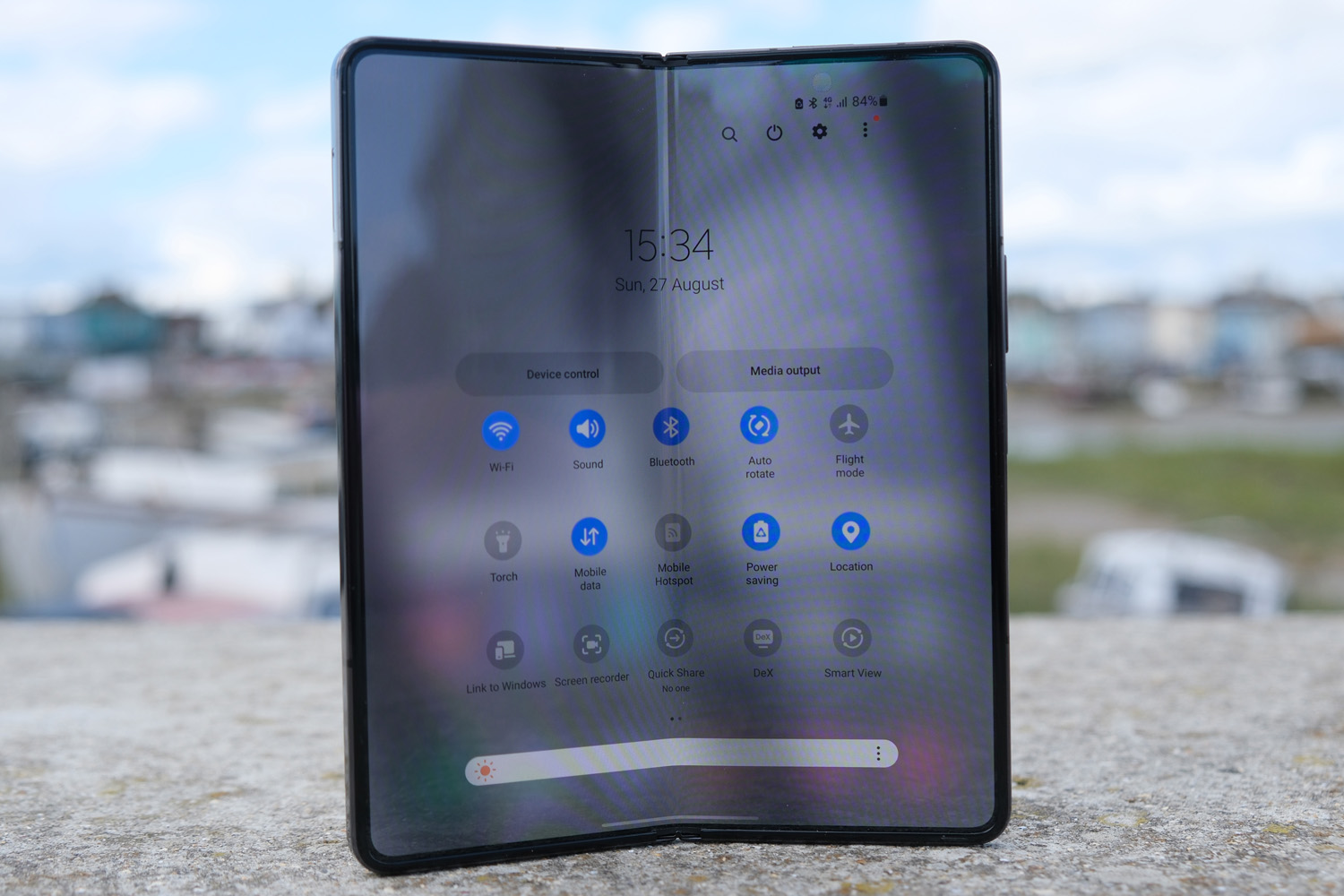
Multitasking is one of the biggest reasons to consider a foldable phone, and it’s something Samsung does very well. The Z Fold 5’s take on Android lets you have three apps open at once on the inner display, plus a fourth in a floating window. The pull-out sidebar also makes it easier to hide and show those windows now (it could be a little fiddly before). Still, I maintain OnePlus’ approach (which mixes full-screen and split-view to brilliant effect) is the best take right now.
Out of the box the taskbar along the bottom edge is always visible, letting you jump into your favourite apps without going back to the home screen first. New dynamic shortcuts show up to the four last-used apps in addition to your faves, so you don’t have to go digging for them in the Recents menu. They’re all still on the small side, and easier to poke with an S Pen than your finger, but it’s still a slicker option than some foldables I’ve tried.
The OneUI interface is as comprehensive as ever, with a wide selection of Samsung apps in addition to Google’s own. There are a few extra toolbars and menu options for newcomers to get their head around, but it shouldn’t take long to acclimatise. Fold-specific features include Flex Mode, which kicks in when you have the phone half-open for hands-free video playback. It was somewhat basic last year, but gains rewind and fast forward buttons now, along with a customisable toolbar to put things like trackpad control a tap away.
It arrived running Android 13, but has since been upgraded to the latest version. Props to Samsung for being fairly quick off the mark with the update to Android 14; it was available for owners to download over-the-air by November, just a month or two after Google officially released it to the public.
Performance & battery life: power lifter
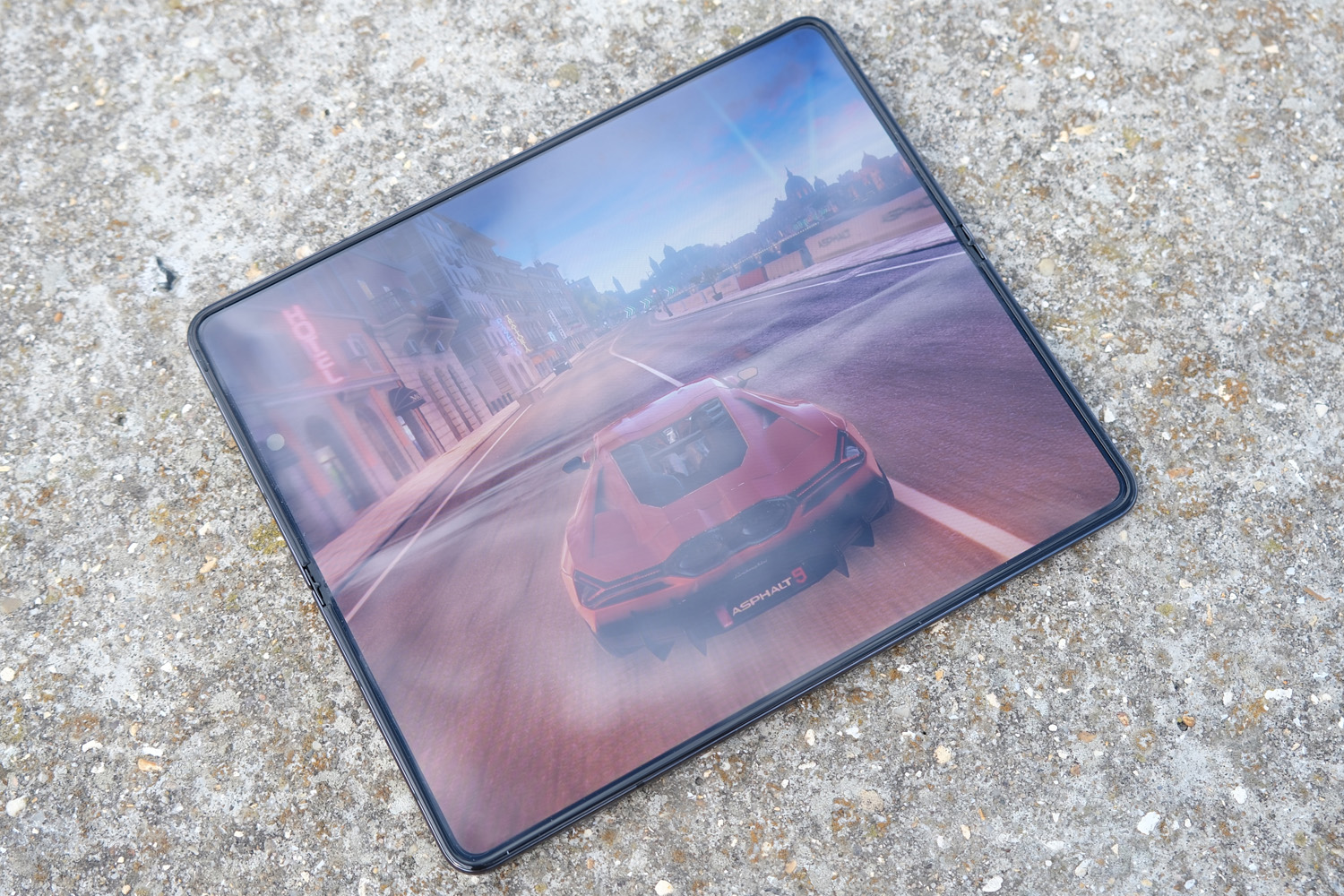
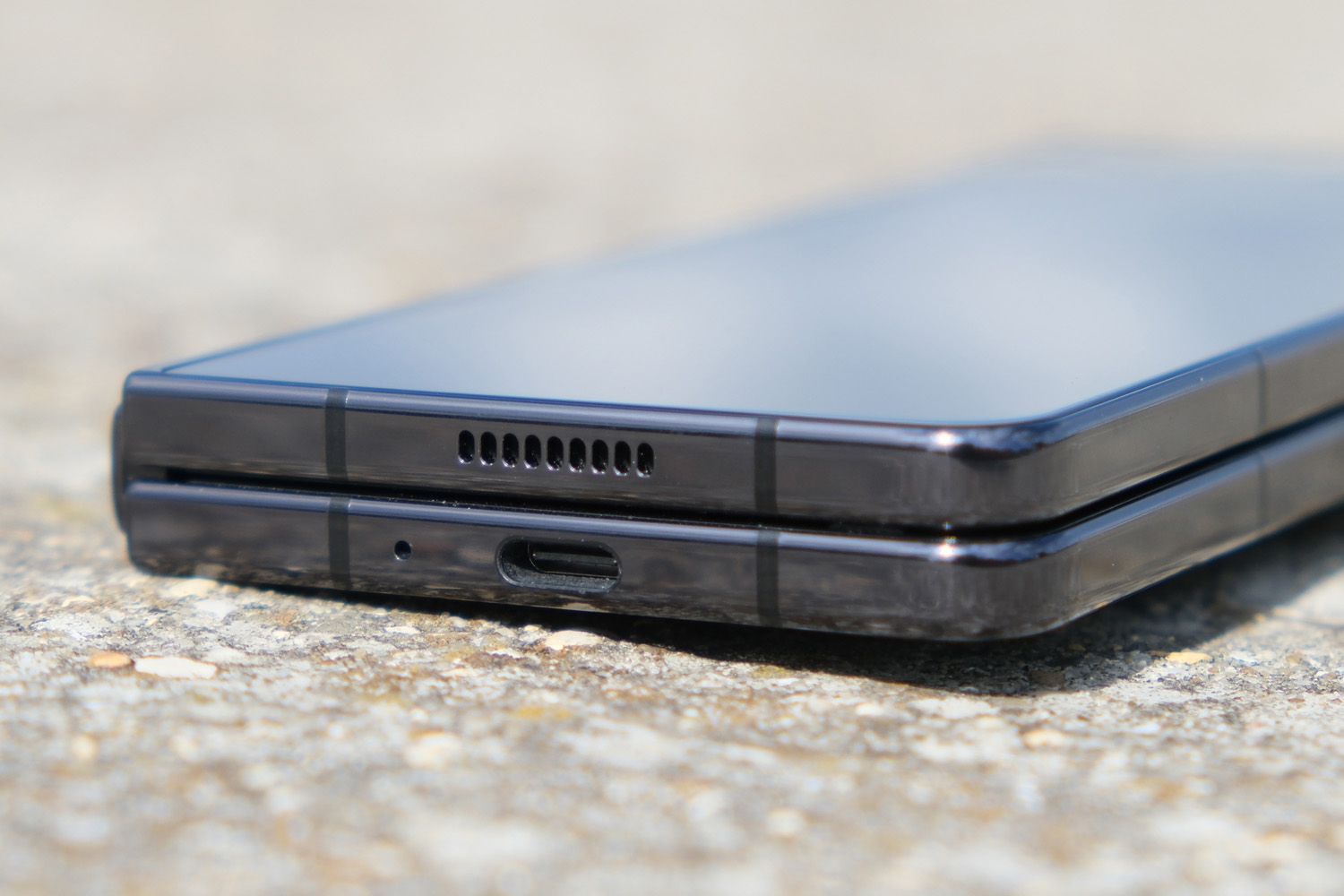
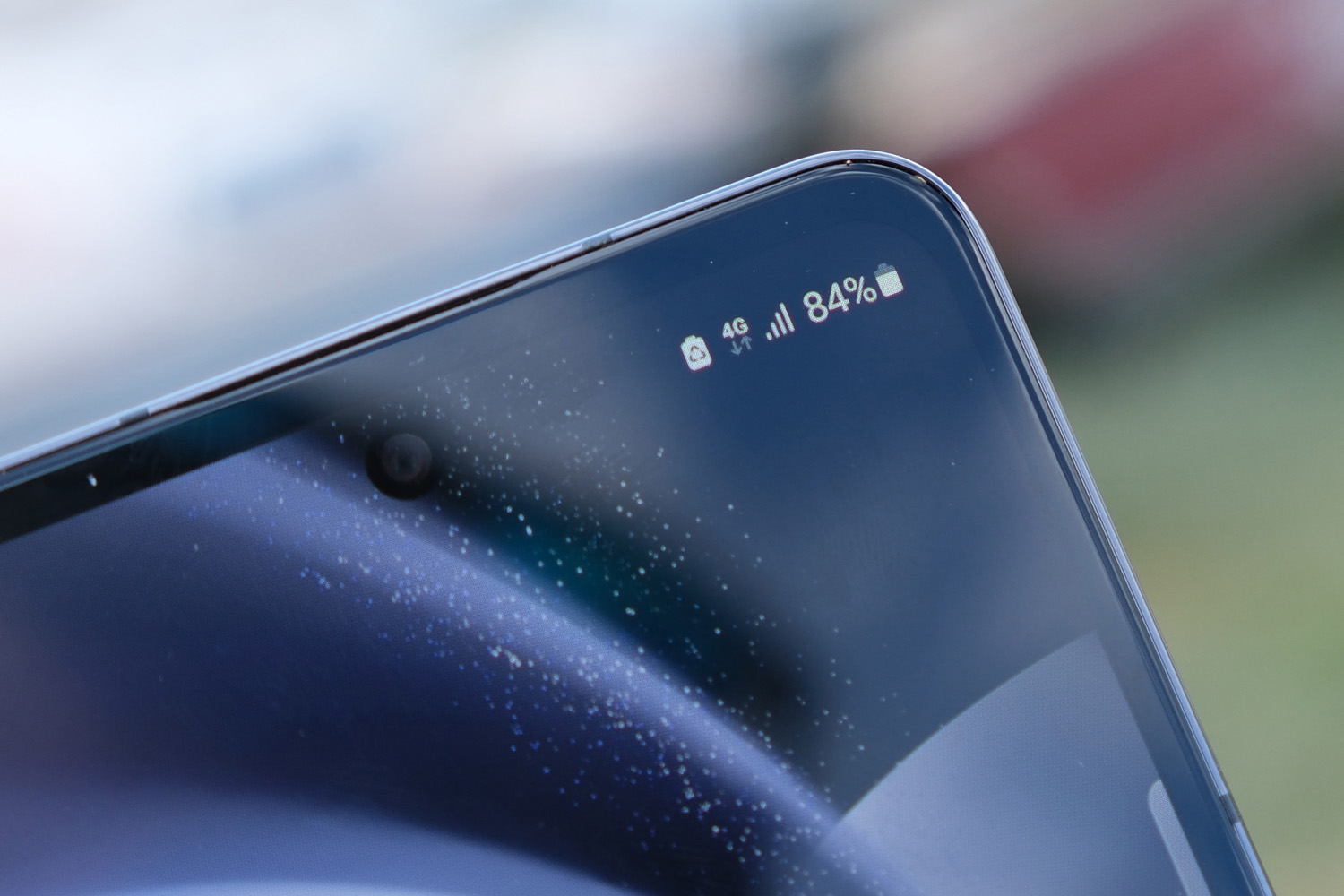
Given Samsung partnered with Qualcomm to put a custom-tweaked Snapdragon 8 Gen 2 CPU in every Galaxy S23 handset, I wasn’t surprised to see it make another appearance for the Z Fold 5. The silicon is clocked higher than the standard chip, so delivers a little extra grunt when temperatures allow. I’ve yet to see a foldable with the newer Snapdragon 8 Gen 3, which has started doing the rounds on traditional flagships, but it’s not a giant leap in power or efficiency, so I don’t feel the Fold 5 is missing out. 12GB of RAM and a trio of storage options are also exactly what I’d expect from a flagship foldable.
It’s seriously snappy in almost every scenario; apps opened almost instantly, multitasking was never an issue, and a few minutes of 4K video recording didn’t suddenly turn it into a furnace. Performance is on par with the immensely capable Galaxy S23 Ultra, which bodes well for gamers as well as those looking to get work done. Whether I was playing on the cover screen or the larger internal one, even demanding titles defaulted to their highest settings and ran pretty much flawlessly.
Battery capacity hasn’t changed from last year, at 4400mAh, and while the CPU is a bit more power efficient, I expected the brighter inner screen to suck down a bit more juice. Samsung reckons an extra hour of video playback or gaming should be realistic, and that largely bore out in my testing. It managed over 15 hours of video playback on the inner display, and slightly more using. the outer screen. A full working day of use was no trouble, even with a fair bit of photography and app multitasking – it’s comfortably better than the anaemic Google Pixel Fold.
No big strides have been made on the charging front, though, which remain a fair bit behind the best folding phones. The Z Fold 5 supports 25W top-ups over USB-C, which is officially good enough for 50% in half an hour, and can handle 15W wirelessly through a Qi-compatible charging pad. The Huawei Mate X3 can manage 66W wired and 50W wireless charging, which is significantly quicker.
Samsung Galaxy Z Fold 5 verdict
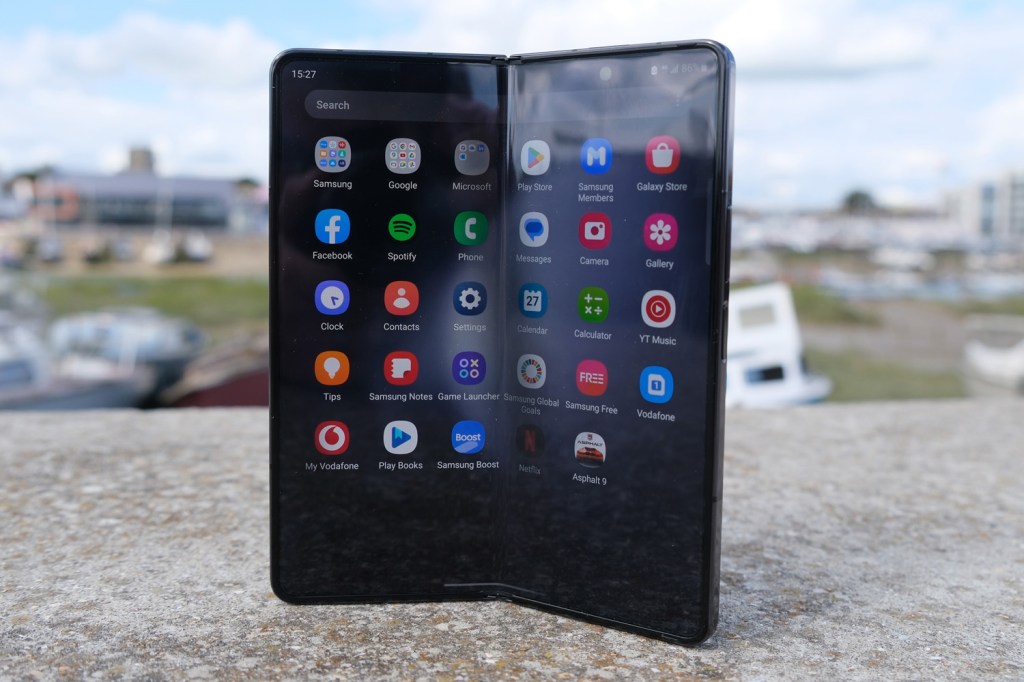
Last year’s Galaxy Z Fold 4 was already a peach of a foldable phone, with just a few rough edges – edges Samsung has smoothed off to great effect here. Deleting the gap means the Z Fold 5 now delivers on design as well as performance and software. The tall and thin outer screen may still be a sticking point for some, though.
I think the Google Pixel Fold has an edge on camera image quality – although neither foldable has the versatility of some traditional flagship phone cameras. OnePlus delivers superior multitasking, too. There’s also a sense Samsung played it safe this year, at a time other brands are launching much skinnier handsets.
That said, the Fold 5 makes up for it by being. the productivity king, with stylus support and more multitasking options than any folding alternative. It’s as complete a folding phone as Samsung has ever produced.
Stuff Says…
Minor improvements make all the difference; from software to camera quality, the Z Fold 5 is as good as foldable phones get. Just expect to pay dearly to get one in your pocket.
Pros
Outstanding build quality and stylish looks – with no gap
Top-tier performance and consistently good battery life
Made for multitasking
Cons
Camera quality behind the best traditional flagship phones
Pedestrian charging speeds
Samsung Galaxy Z Fold 5 technical specifications
| Screen | 6.2in, 2316×904 AMOLED w/ 120Hz (outer) 7.6in, 2176×1812 AMOLED w/ 120Hz, S Pen support (inner) |
| CPU | Qualcomm Snapdragon 8 Gen 2 |
| Memory | 12/16GB |
| Cameras | 50MP, f/1.8 w/ dual pixel PDAF, OIS + 12MP, f/2.2 ultrawide + 10MP, f/2.4 telephoto w/ PDAF, OIS, 3x optical zoom rear 10MP, f/2.2 cover 4MP, f/1.8 inner |
| Storage | 256GB/512GB/1TB on-board |
| Operating system | Android 13 w/ OneUI |
| Battery | 4400mAh |
| Dimensions | 155x130x6.1mm (unfolded) 155x67x13.4mm (folded) 253g |



